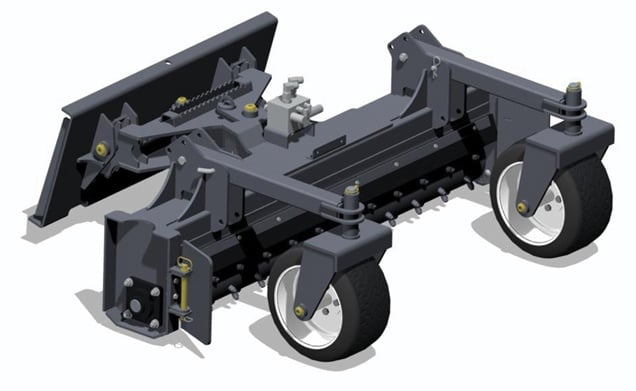Our original designs go through several phases of development, and internal testing occurs at every phase. Any new attachment for skid steer loaders is heavily scrutinized before making it to market. Here's an inside look at our process.
In-House Design and Testing
All new designs are developed using 3D modeling software to ensure proper part fit. We use structural analysis software to analyze each design to calculate and minimize high stress areas. This allows us to make adjustments to the design before a single piece of steel is cut.

Testing New Attachments for Skid Steer Loaders
After new attachments pass the design phase, we build a working prototype. We run the prototype on a skid steer and put it through preliminary testing. This allows us to determine if the attachment operates as intended.
When the attachment makes it through this phase, we build two or three additional test units. These are the units that'll be tested by individuals outside of our company. You can read more about our process for externally testing attachments for skid steer loaders here.
Why Our Internal Testing Process Matters
Like our product line, our internal processes are also always subject to review, scrutiny, and improvement. It's a mentality that allows us to be industry innovators. We can remain flexible in any phase of product development because it's performed in-house.
Since we're not outsourcing any stages of our development and manufacturing processes, we're able to react to the market quicker. That can mean anything from performing minor fixes on existing products to developing new or upgraded attachments for skid steer loaders. Regardless, we're looking to innovate and improve performance.

